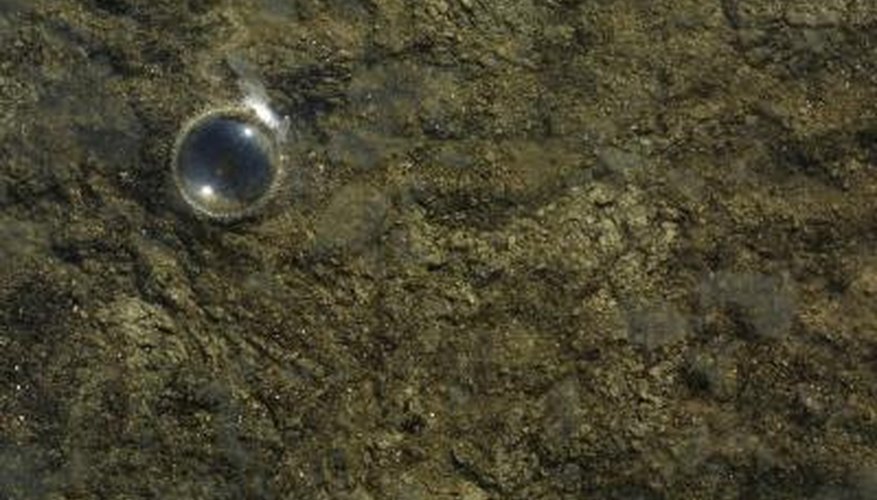The Japanese skimmia (Skimmia japonica) is a shade-loving evergreen shrub that produces showy flowers in the spring. It thrives throughout U.S. Department of Agriculture hardiness zones 6 and 7 and, though not extremely common, is used to add colour to the landscape. Though generally hardy, a number of pests, diseases and environmental factors may be responsible for yellow spots on leaves, and they should be treated as soon as possible to prevent irreparable damage.
Fertiliser
Adding fertiliser improperly causes leaf scorch, a yellowing of leaves that is the result of root damage. Growers should be especially cautious when applying liquid chemical fertilisers, as they are more likely to harm roots. The amount of yellowing will vary greatly depending on how widespread the root damage is. Yellowing may show up on just a few branches or may take over the whole plant. Discolouration generally starts at the margins and moves inward if the problem is left untreated. Application instructions of fertiliser should be followed carefully to prevent leaf scorch, or you must keep soil mixed with plenty of organic compost to reduce or eliminate the use of chemical pesticides.
- Adding fertiliser improperly causes leaf scorch, a yellowing of leaves that is the result of root damage.
- Application instructions of fertiliser should be followed carefully to prevent leaf scorch, or you must keep soil mixed with plenty of organic compost to reduce or eliminate the use of chemical pesticides.
Water
Leaf yellowing may be the result of either underwatering or overwatering. Standing water will create a hospitable environment for fungi and bacteria, which may lead to root problems, health decline and yellow leaves. Excessive watering may also prevent proper air flow to roots, making nutrient and water transport difficult. When nutrients and water are lacking, yellow leaves are a common problem. Soil drainage may be corrected by mixing in well-decomposed organic compost, which won't usually reverse water-damaged leaves but will prevent the problem from getting worse and aid in healthy new growth. Growers should keep soil moist for most plants but avoid leaving standing water.
- Leaf yellowing may be the result of either underwatering or overwatering.
- Standing water will create a hospitable environment for fungi and bacteria, which may lead to root problems, health decline and yellow leaves.
Iron Chlorosis
Iron chlorosis is a shortage of iron and will generally present with leaf yellowing. It is a fairly common occurrence in high pH soils, and it may become trouble after times of heavy rain. Iron is an important part of chlorophyll production, and without it, the leaves will turn yellow and eventually die. This discolouration is most prominent at the leaf edges but will progress inward if the problem is not fixed. Growers should apply an iron chelate and surround the base of the plant with a hardy layer of compost. Compost will aid in maintaining a healthy environment for the plant.
- Iron chlorosis is a shortage of iron and will generally present with leaf yellowing.
Bacteria and Fungi
A number of infections may result in leaves losing colour or fading. Among them, root rot is a serious concern. Like other bacteria, root rot is most prevalent when rains are heavy and water is left standing at the base of the plant. The fungus will enter through the roots, eventually turning them into a useless grey mush. This damage limits nutrient transport and will quickly turn leaves yellow. Once the infection has set in, it is difficult to cure. If caught early enough, some pruning and transplanting may work, but most often root rot is fatal. To prevent these problems, it is important to clean up dead or fallen debris and to keep water from standing at the base of the plant. These techniques will limit bacterial and fungal growth and assure that plants get plenty of air flow.
- A number of infections may result in leaves losing colour or fading.
- These techniques will limit bacterial and fungal growth and assure that plants get plenty of air flow.
